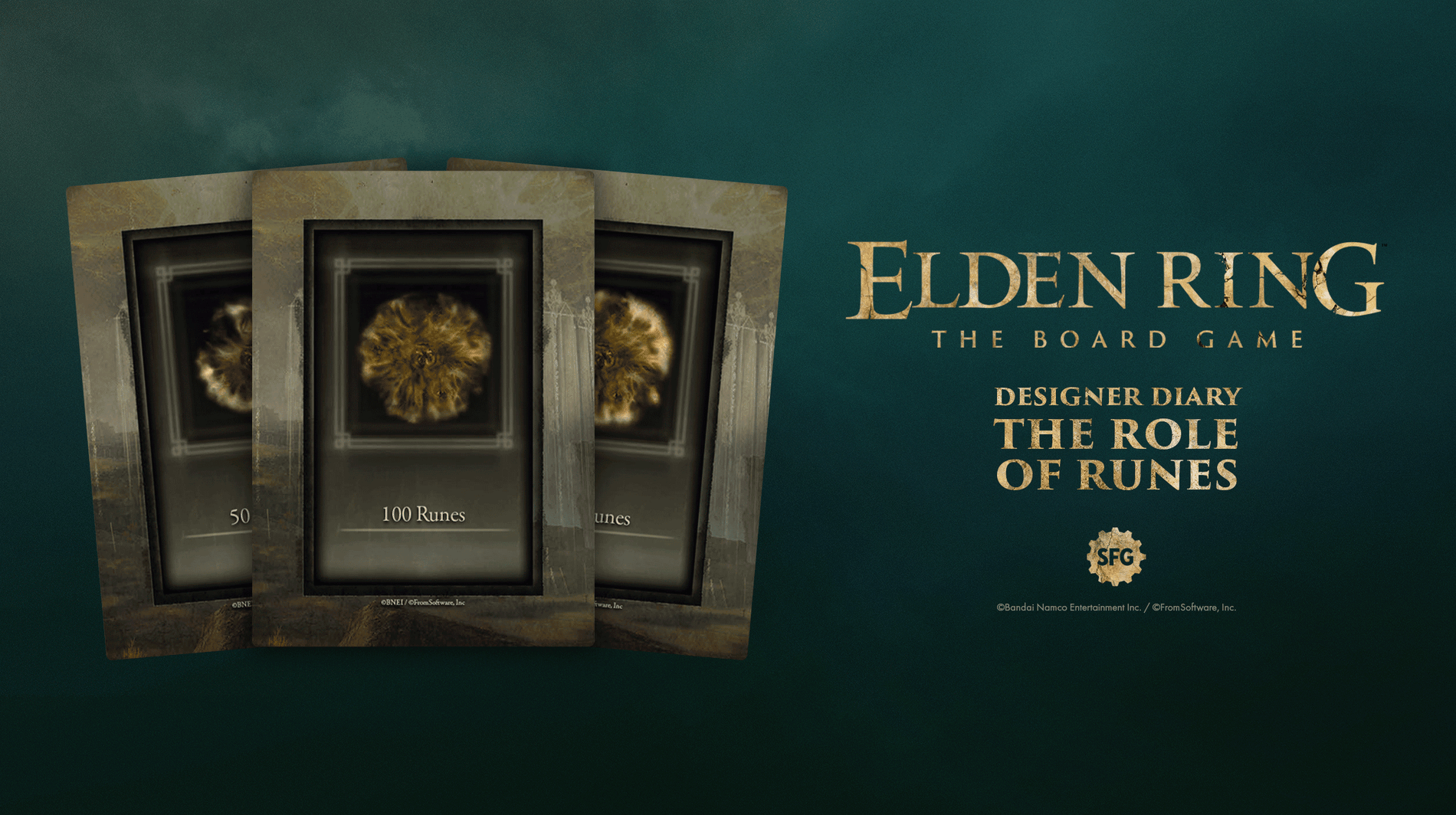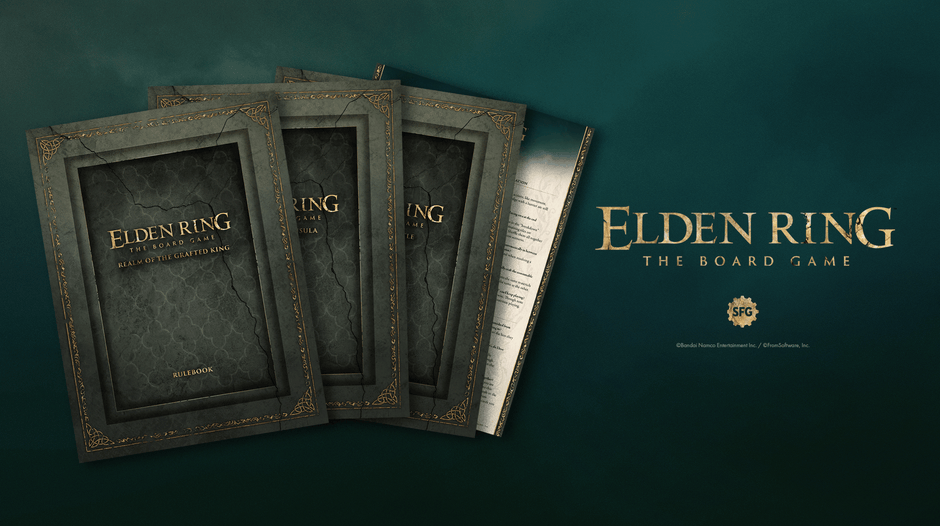Hey there, Lead Designer, Fraser McFetridge here to talk to you about the Rune System we’ve designed for Elden Ring: The Board Game.
As players familiar with the video game will already be very familiar with, runes are the primary leveling up resource for your Tarnished. This is also true with the board game. There are a lot of reasons having a robust level up system is essential for a campaign game like this. So, before we deep dive into the system itself, let’s go over a few of them.
Hours of play
It goes without saying that both the lower and upper limits of the hour count to complete a game like this are not small. As designers, we’re very sensitive to the fact that each individual hour of gameplay needs to not only build on the previous one, but constantly provide new experiences and challenges. Nobody wants to see the game evolve, while feeling like they can’t evolve with it, or be stuck in a bad spot because of decisions they made in the first few hours while still learning the ropes.
Vast and versatile content
Not only does ELDEN RING: The Board Game have a significant amount of content in terms of the enemies you'll face, but there's also a huge amount of versatility and options for players to discover as they build their Tarnished – new weapons, talismans, armour, attributes, traits… the list goes on. So, it stands to reason that the players need to be afforded the freedom to experiment and find the build that works best for them amongst all of this.
For when real life gets in the way
A phrase familiar to pretty much everyone that’s ever tried to run or attend a multi-session campaign for basically anything. As much as it would be nice to assume that every player will always be present for every session, it's not always possible. Given our professions, I’m sure it's no surprise if I told you this is something we are keenly aware of, from personal experience. To that end, we know how important it is to allow players to be fluid in attending or missing one session or another.
With all that in mind, we put a lot of thought, and more than a little development time, into the Rune System. Here’s a quick breakdown of how it works:
As a group, players begin the campaign with zero runes. As they complete scenarios, they’ll earn runes. By the end of the Realm of the Grafted King campaign, this will reach around about 200 runes. This is a running total, and is tracked by Rune Cards, which are kept in the special section of the box representing the Roundtable Hold. This total will never decrease. Almost everything that a Tarnished can add to their dashboard (like listed above), uses up a certain amount of runes.
Typically, starting level equipment and attributes don’t use up any runes. However as things get more advanced — upgrading equipment, adding more powerful attributes cards to the deck, equipping a trait etc — you’ll start needing available runes. You can probably see where I’m going with this, the total runes on each individual Tarnished’s dashboard cannot exceed the group’s current total runes. Players are completely free to change what’s on their Tarnished’s dashboard in between scenarios, provided that they don’t exceed this total.
I know this sounds fairly simple, but if my experience in game design has taught me anything, it's that the simple ideas are almost always the best. Here’s all the benefits players get with this system.
You can easily dip in and out of the campaign. And not just because one player misses a session.
It's very easy to keep track of where you are in the campaign with the card storage design. All you have to keep track of is which cards are in the Roundtable Hold section of the box. That’s it, and to make it even easier, there’s a neat little divider card provided. Once that’s done, it's very easy to play a one-shot scenario, which has all the details you need at the back of the rulebook, then jump straight back into the campaign, where you left off.
Of course, this also makes it a very simple exercise to add new players to an ongoing campaign, or have an existing player switch their Tarnished for another.
You can switch out your equipment for some snazzy new weapon you’ve picked up from a recently felled enemy, or even alter your entire build in no time at all. (in playtesting, it only took a few minutes to completely swap one build for another).
Outside of campaign mode, for players that may not have the time to engage in the full-fledged journey through the Lands Between, this system created a very streamline way for players to make their way through the scenarios of their preference as one-shots.
All in all, we’re very excited to be able to bring players a game with both a deep campaign and streamlined level up experience.
Join Fraser, Steve and Jamie as they take on the role of braved Tarnished, journeying across the perilous landscape of Limgrave, showing exploration in ELDEN RING: The Board Game:
Make sure you join us next time as we dive into some of the thrilling expansions for ELDEN RING: The Board Game, starting with the Erdtree Avatar!












